The first Bottle of Wine
One of the questions we’re often asked is: I’d like to “lay down” a case of wine for a newborn child. What should I get? It’s a lovely tradition.
Grand Openings
Sometimes people expect the children to open the bottles on their 21st birthday, or for their college graduation, or their wedding day. But the idea is the same: a case of wine that will mature gracefully and gain some wisdom, symbolically mirroring the child. And, of course, each bottle will be a memory of the giver of the wine and a reflection of their hopes and dreams for the child when he or she was born.
the children to open the bottles on their 21st birthday, or for their college graduation, or their wedding day. But the idea is the same: a case of wine that will mature gracefully and gain some wisdom, symbolically mirroring the child. And, of course, each bottle will be a memory of the giver of the wine and a reflection of their hopes and dreams for the child when he or she was born.
So, what would we recommend? It’s a very difficult question to answer, because we’re being asked to suggest something that will be good 20 years down the road or more. That said, 20 years isn’t nearly as long as it seems when it comes to wine. Many Bordeaux from 1982 are still great. And a case of 1980 California Cabernet Sauvignon would be a delicious present for anyone turning 21 this year.
In this case, storage matters. In general, as you know, we say you shouldn’t get obsessive about storage, since most wines are drunk right away. But these will be around for many years. A gift of a few bottles shouldn’t require you to buy an expensive storage system, but be sure to keep these gifts someplace dark, with a fairly constant, moderate temperature, where they won’t be disturbed.
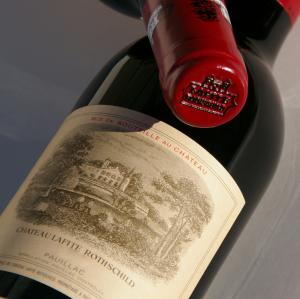 The classic wine to put away for the kids is a case of first-growth Bordeaux, like Château Lafite-Rothschild. That’s certainly a fine idea if you can afford it, but most of us can’t. Keep in mind that anything worth keeping all those years won’t be released to the market for at least a couple of years after the child is born anyway, so you have plenty of time to research this — and to wait for your dot-com stocks to recover so that you can afford that Lafite after all.
The classic wine to put away for the kids is a case of first-growth Bordeaux, like Château Lafite-Rothschild. That’s certainly a fine idea if you can afford it, but most of us can’t. Keep in mind that anything worth keeping all those years won’t be released to the market for at least a couple of years after the child is born anyway, so you have plenty of time to research this — and to wait for your dot-com stocks to recover so that you can afford that Lafite after all.
We try not to dwell on vintages very much, because there are so many variables. But this is one case where you might want to consult a vintage chart (they’re often next to the cash registers at wine stores). There are some so-so years in Bordeaux, for instance, in which the wines aren’t likely to be long-lasting, while the same year might be a great one in, say, California.
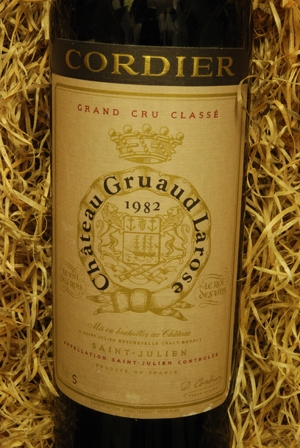 Assuming it’s not a terrible year, a mid-range Bordeaux is a good idea. Our favorite, Gruaud-Larose, would be a treat in 20 years, for instance. If the child happens to be born in a great year in Bordeaux, even a lesser known, lower-priced Bordeaux would be fine. If you were lucky: the child born in 1989 and in 1990, both excellent years in France. Single vineyard Barolo, Brunello di Montalcino or Super Tuscans reds from Italy are also good choice and less expensive than top Bordeaux wines.
Assuming it’s not a terrible year, a mid-range Bordeaux is a good idea. Our favorite, Gruaud-Larose, would be a treat in 20 years, for instance. If the child happens to be born in a great year in Bordeaux, even a lesser known, lower-priced Bordeaux would be fine. If you were lucky: the child born in 1989 and in 1990, both excellent years in France. Single vineyard Barolo, Brunello di Montalcino or Super Tuscans reds from Italy are also good choice and less expensive than top Bordeaux wines.
Also consider a big California Cabernet Sauvignon. We’ve had some outstanding California Cabernets over the years that were clearly built to last. Some wineries have reputations for making “big” wines. We always recommend Sullivan, Burgess and Steltzner as lay-down wines, since we’ve had good luck ourselves with aging them. We think Staglin wines will get better with age, as will some of the higher-end Beringer wines, but there are plenty of California Cabernets that will age well. We’ve also had some Zinfandels from California — from Sausal, for instance — that we think could last just about forever.
Cost Factor
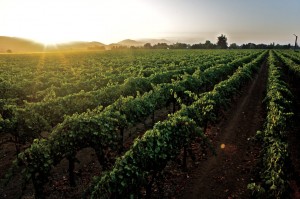 Don’t feel that you need to spend a fortune. We, and many of our readers, are constantly amazed at how well the inexpensive red wines of Louis M. Martini Winery age. As it happens, Louis P. Martini, son of Louis M. Martini, kept a cellar for each of his children beginning with wines from the year they were born. His daughter Carolyn, who heads the company now, brought a 1947 Barbera, from the year of her birth, to the Weekend Journal’s Open That Bottle Night party in Napa in November. It was still delicious.
Don’t feel that you need to spend a fortune. We, and many of our readers, are constantly amazed at how well the inexpensive red wines of Louis M. Martini Winery age. As it happens, Louis P. Martini, son of Louis M. Martini, kept a cellar for each of his children beginning with wines from the year they were born. His daughter Carolyn, who heads the company now, brought a 1947 Barbera, from the year of her birth, to the Weekend Journal’s Open That Bottle Night party in Napa in November. It was still delicious.
You can find your own Cabernet or other red wine to save. Ask a wine merchant for a recommendation and take it home. Open and drink. If you find it difficult to drink because it’s so full of tannins that it makes your mouth pucker — if it tastes “hard,” which you’ll know when you taste it — then it’s probably a good candidate to lay down. If it’s soft and approachable, it probably isn’t.
Port is a good choice, since it lasts forever and gets better with age. It’s also such an elegant, grown-up drink that it has a special resonance in marking a coming-of-age. The problem is that not every year is good enough to be called a vintage year in Oporto, so you can’t be sure you will be able to save a case from the child’s birth year.
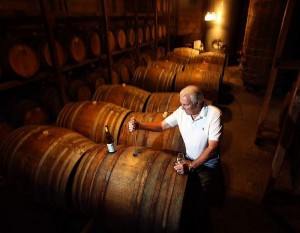 That’s also the problem with Sauternes. This great sweet wine is, to us, the perfect wine to lay down, the one we recommend most often. It’s sweet — like the child — and it gets better with age. Not only that, but the wine gets more beautiful in its clear bottle as the years go on, changing from yellow to gold to orange, like a sunset that lasts many years. This means that the child can appreciate the wine for years before he or she can drink it, just by looking at it. But some years are so terrible that little or no Sauternes is made.
That’s also the problem with Sauternes. This great sweet wine is, to us, the perfect wine to lay down, the one we recommend most often. It’s sweet — like the child — and it gets better with age. Not only that, but the wine gets more beautiful in its clear bottle as the years go on, changing from yellow to gold to orange, like a sunset that lasts many years. This means that the child can appreciate the wine for years before he or she can drink it, just by looking at it. But some years are so terrible that little or no Sauternes is made.
In the long run, the very best wine to lay down is probably one with some special significance to you, and that significance could be merely that it’s your favorite wine.
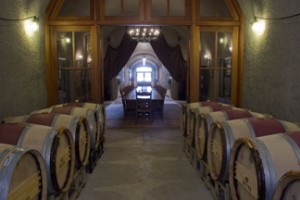 Tips
Tips
Consult a vintage chart to find wines that are likely to be long-lasting.
Keep the bottles lay down (the wine should touch the cork), in someplace dark with constant temperature at 14-16 degree
In the long run, the very best wine to lay down is probably one with some special significance to you.



 0
0